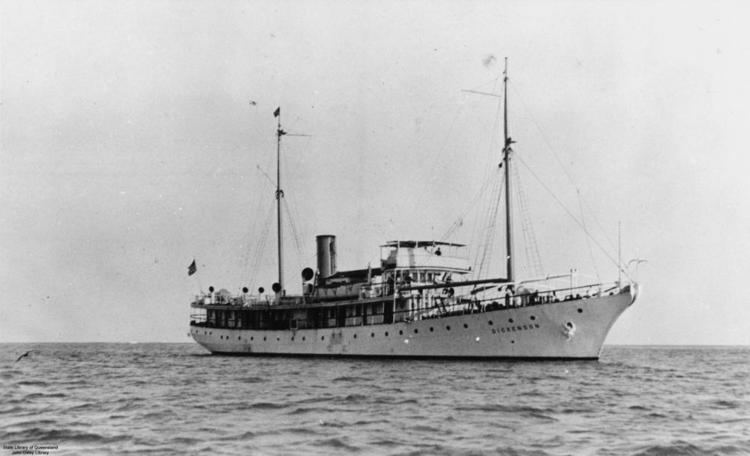Namesake Kailua, Hawaii Launched 1923 Displacement 1.28 million kg | Port of registry New York Weight 1,434 tons | |
 | ||
Name CS Dickenson (1923–42)
USS Kailua (1942–45) Owner Commercial Pacific Cable Company Operator Commercial Pacific Cable Company (1923–42)
United States Navy (1942–45) Builder Sun Shipbuilding & Drydock Company | ||
USS Kailua (IX-71), formerly CS Dickenson, was a civilian cable-laying ship that became an auxiliary ship of the United States Navy in the Second World War.
Contents
Building
The Sun Shipbuilding & Drydock Company of Chester, Pennsylvania built the ship as Dickenson for the Commercial Pacific Cable Company. She was launched in 1923, completed that April and registered in New York.
The ship had four corrugated furnaces with a grate area of 82 square feet (8 m2) that heated two single-ended boilers with a combined heating surface of 3,303 square feet (307 m2). They supplied steam at 185 lbf/in2 to her three-cylinder triple expansion engine, which developed 166 NHP and gave her a speed of 9.8 kn (18.1 km/h).
Naval service
The United States Navy bareboat chartered Dickenson on 19 May 1942 and renamed her Kailua. She was commissioned on 5 May 1943 with Lieutenant C.R. Bower in command.
Kailua left Pearl Harbor on 15 May 1943 to join the Service Force of the United States Seventh Fleet. Upon her arrival at Pago Pago, Samoa, 25 May she immediately began operations as an auxiliary in the Pacific islands. In June she reached Milne Bay, New Guinea, and for the next year remained there laying cables, anti-submarine nets, and buoys. Kailua reached Pearl Harbor 4 July 1944 and performed similar services there for the rest of the War.
She was decommissioned at Pearl Harbor 29 October 1945 and sunk as a target on 7 February 1946.
Rediscovery
In 2013 the wreck of the Kailua was discovered by the Hawaii Undersea Research Laboratory. It is located 20 miles off the coast of Oahu at a depth of 2,000 feet.
Awards
Links
Media related to USS Kailua (IX-71) at Wikimedia Commons
